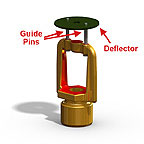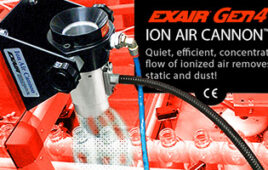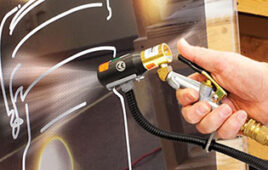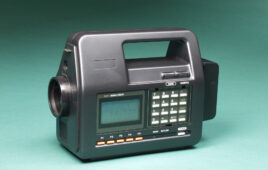The International Residential Code (IRC) mandates the installation of fire sprinklers in all one and two family residential dwellings, effective January 1, 2011. A 2008 report published by Fire Smarts shows that homes using a sprinkler system are 82% safer as a result of these sprinklers.
Typical costs for a residential sprinkler system are minimal, about as much as a typical whirlpool bathtub, or for a 2400 sq. ft. house about $1.50 per sq. ft. Despite this relatively low entry point, the majority of new construction doesn’t use this proven safety feature, so analysts predict strong market growth.

Deflector carrier/guide pins hold a residential sprinkler’s fixture and deflector plate together. These guide pins are critical to the operation of the device and must be securely fastened to retain the deflector under pressure, but manufacturing them can result in cracked rivet heads.
Residential sprinkler heads are usually connected by a half-inch pipe system that runs throughout the home, often concealed in the ceiling. The sprinkler heads activate at specific temperatures, between 135°-165° F. When activation temperature is reached, a link inside the sprinkler head senses the heat and releases the water held under pressure in the pipes.
Once the water is released, it showers down on the heat source, controlling or extinguishing the fire. Because sprinkler activation requires each head to be heated, only the area above the fire is activated. Maximum distance between sprinklers is about 12 ft. (3.7 m) and maximum water pressure is approximately 130 psi (8.9 bar).
Deflector carrier/guide pins hold the sprinkler’s fixture and deflector plate together. These guide pins are critical to the operation of the device and must be securely fastened to retain the deflector under pressure. Manufacturing these pins was a challenge, often resulting in cracked rivet heads. Residential fire safety manufacturers turned to Orbitform, a company with expertise in orbital forming and application development to create a variety of custom riveting and forming approaches.

The use of orbital forming proved a better approach to their manufacture.
A Model B-240 with Watchdawg® Process Monitoring and Process Control machine orbitally forms the pins in the down position one at a time using a custom clamping fixture. The B-240 uses a captured flat peen titled at a four-degree angle and over 500 lb of forming force. This precision ensures the sprinkler heads perform properly.
Orbitform
www.orbitform.com
::Design World::
Filed Under: Assembly, INDUSTRIAL SAFETY SYSTEMS





Tell Us What You Think!